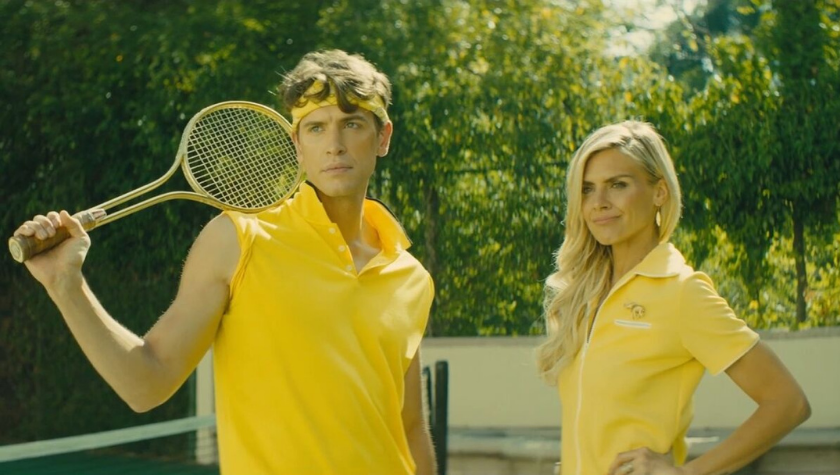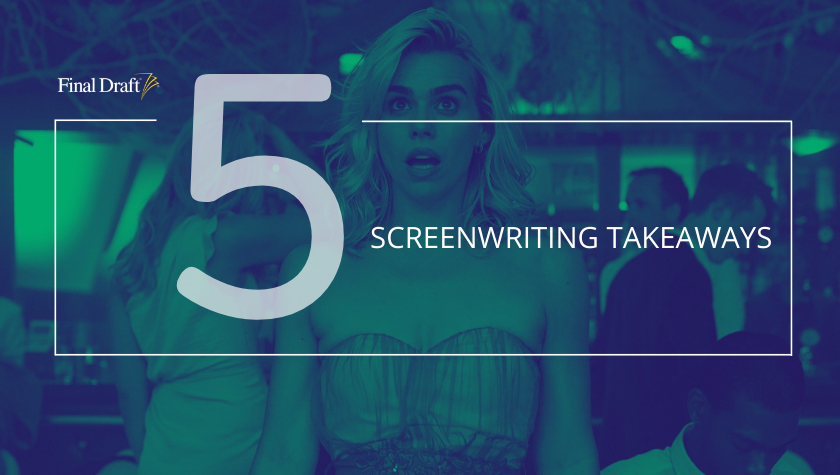5 Screenwriting Takeaways: 'Wander Darkly's' Unique Examination of the Memory of Love
January 4, 2021
Tara Miele’s new film Wander Darkly is reminiscent of Eternal Sunshine of the Spotless Mind with some big final reveals that could be compared to The Sixth Sense, but make no mistake; Wander Darkly is absolutely a love story. The film opens with restless Adrienne (Sienna Miller) and Matteo (Diego Luna) at odds in their relationship. They have a newborn baby, and a new mortgage they can’t really afford. Adrienne has requested a date night and Matteo’s forgotten. After some awkward drinks with friends, they drive home while having an argument. When Matteo finally asks what has been avoided — “Do you want to break up?” — they end up in a terrible, life-changing accident. Adrienne wakes up outside of her body, and this is where Miele’s story starts to soar. Here are five takeaways from Wander Darkly:
1. Structure behind the anti-structure
It’s hard to clearly define the structure of Wander Darkly, and that’s a good thing. It made this writer unable to guess the ending, despite it seemingly having been there all along. Miele describes her structure as circular. Miele has stated she finds traditional structure stifling. But if one is to lay out the beats of the movie one by one, there is a linear (and sequential) story scrambled both for the sake of playing with the idea of memory, and to help build to a very startling reveal. Act breaks do not necessarily fall where expected, and that’s refreshing as love and relationships never go exactly as planned. This allows Matteo to freely recount their love story without restrictions, building the case for why Adrienne should remain on earth.
2. Inspired by real life
There is nothing like a personal story, particularly for a writer-director when trying to get a project off the ground. Wander Darkly stemmed from a car accident that Miele survived with her husband. She told the Hamptons film festival how specifically that event inspired the movie: “I blacked out, we saw headlights, and then it was like darkness. When I came to I couldn't see, so I was screaming at him for help and I was mad at him. It didn't even occur to me that something could have happened to him," she said.
"We were fine, thank goodness, but I was concussed afterwards. And I actually did have this moment that Sienna has in the movie, where she's on the couch calling for her baby. We had two little girls at the time, but she's calming down her baby and the baby didn't respond. In real life, the baby is just a baby, which is why she didn't respond; but in my concussed state I did have a moment where I was like, 'Oh, my god, I died.' I think being a parent and having a brush like that really put my mortality into focus.”
Writers know the power from pulling from personal experience, but in watching Wander Darkly it truly feels Miele inserted her whole heart into the project.
3. Memory as character
The conceit of this film is memory itself and it serves as an active third protagonist throughout. Matteo and Adrienne recall things differently and they comment on their joint memories while also acting them out. It is a powerful device that becomes more engrossing as the audience simultaneously begins to puzzle if Adrienne is still present in her own life, or if she has already transcended life itself. Because Miele experienced a concussion after her car accident, the idea of memory and the state of being concussed influenced her examination of memory itself. She told the Hamptons film festival: “I was definitely interested in looking at how a concussion, that concussed state, is similar to the psychosis of grief — a re-examination of our lives at certain points, when we reach conclusions to things," she said.
"Finding that balance was really important for Sienna and for me on set. How lucid is she, how much does she actually understand? I think when you're in a concussed state, you can seem fine one minute, and then the next minute you're saying things that don't actually make sense. I was fascinated by that state of mind.”
The idea of giving an inanimate object or a state of being just as much power as character is always worth examining if it fits the theme of your story.
4. The grim reaper
The literal grim reaper haunts Adrienne throughout the film. She sees a hooded character on several occasions. She visits a Dia de los Muertos party where she lies in her own grave. She worries death is coming for her new baby. The title of the film is taken from a Lord Byron poem, “I had a dream, which was not all a dream./The bright sun was extinguish’d, and the stars/Did wander darkling in eternal space," it reads. And as it feels as though death is stalking Adrienne, darkness seems to lurk around every corner. Nonetheless, Adrienne eventually finds the light, and Miele effectively uses death as perhaps the biggest source of tension in the film.
5. The fragility of being human
If the reason to make a film in the first place is to remind us why we are human, Miele has succeeded. Ultimately, her theme of the fragility of human life is underscored throughout. She begins by giving us the sketch of two people — Adrienne and Matteo could initially be any couple, but as their memories build and become more clearly in focus, it is their specificity that makes the audience root for them. The tragedy of their accident is felt so much more acutely in the end of the film than in the beginning as the brevity of life can be just as painful as death.
Final takeaway
In a time where death is seemingly ever-present, Wander Darkly hits especially hard — but in that good way that makes one stop and think and be reminded of the resilience of the human spirit. Miele achieves this through surprising structure and embracing the suspenseful power of death and memory. Wander Darkly is a unique film that earned its Sundance laurels, and is beyond worthy of the attention of a virtual audience.
Written by: Lindsay Stidham
Lindsay holds an MFA in screenwriting from the American Film Institute. She has overseen two scripts from script to screen as a writer/ producer. SPOONER, starring Matthew Lillard (SLAMDANCE), and DOUCHEBAG (SUNDANCE) both released theatrically. Most recently Lindsay sold PLAY NICE starring Mary Lynn Rajskub. The series was distributed on Hulu. Recent directing endeavors include the Walla Walla premiering (and best screenplay nominated) TIL DEATH DO US PART, and the music video for Bible Belt’s Tomorrow All Today. Lindsay is currently working on an interactive romcom for the production company Effin' Funny, and a feature film script for Smarty Pants Pictures. Lindsay also currently works as an Adjunct Screenwriting Faculty member at USC’s School of Cinematic Arts. You can follow her work here: https://lindsaystidham.onfabrik.com/- Topics:
- Discussing TV & Film




